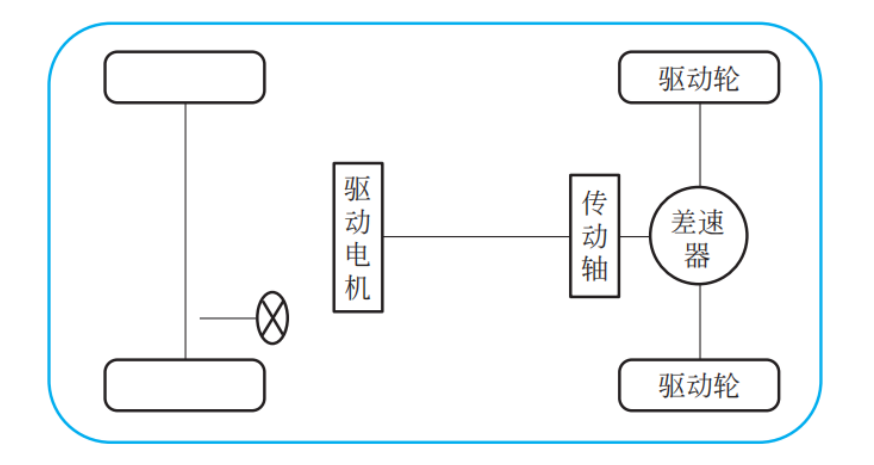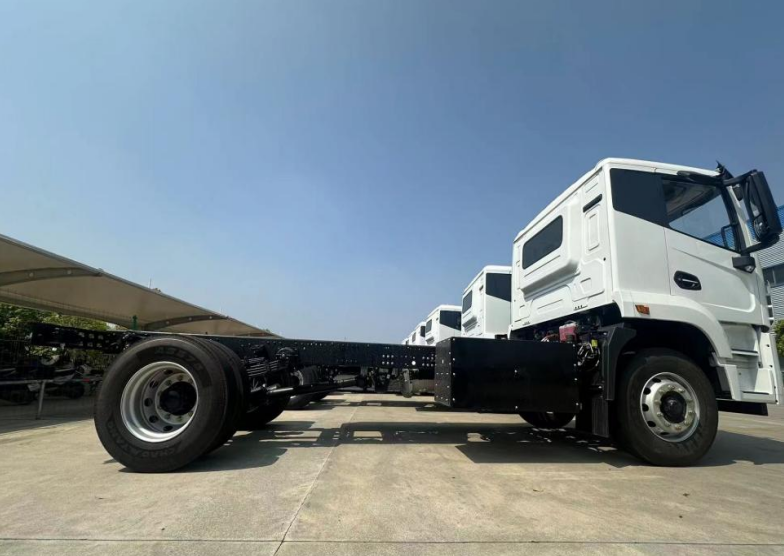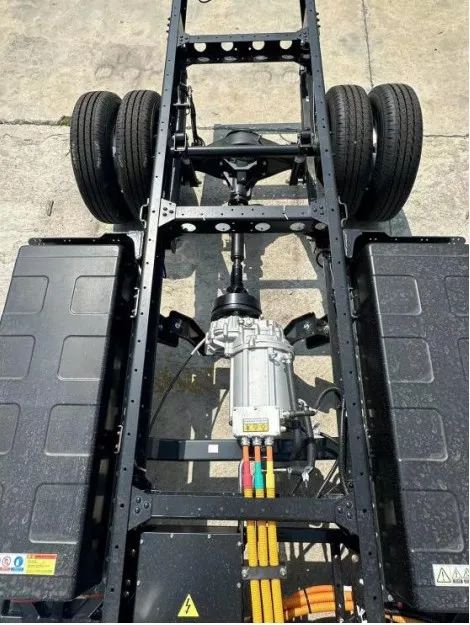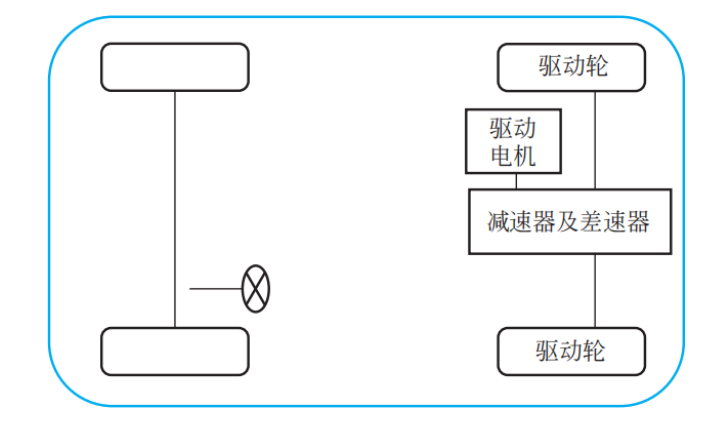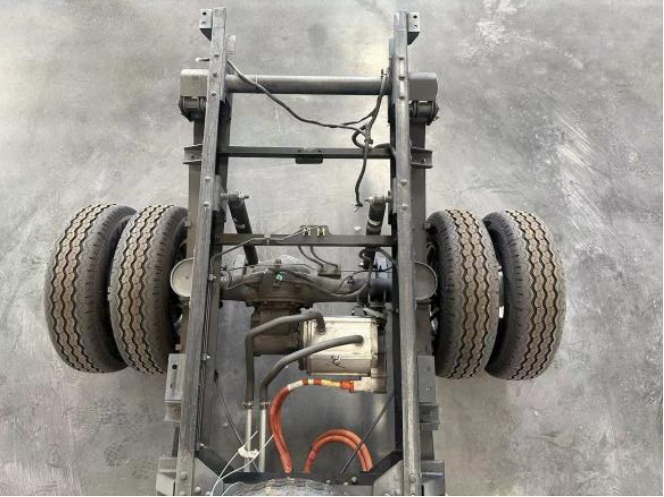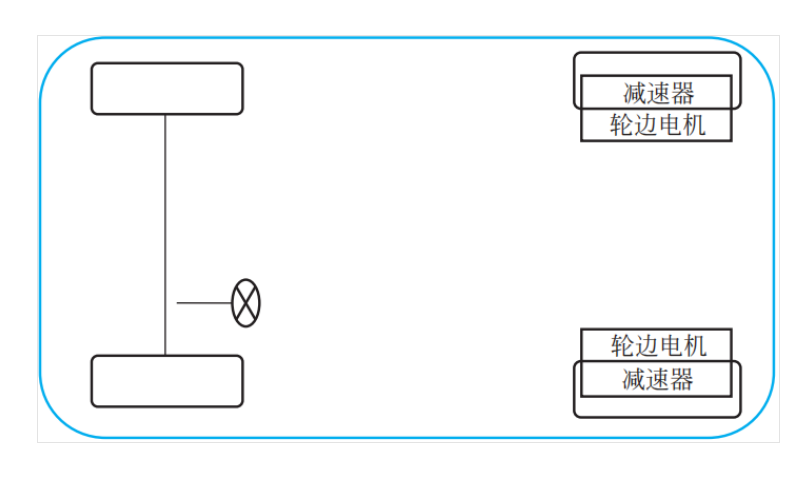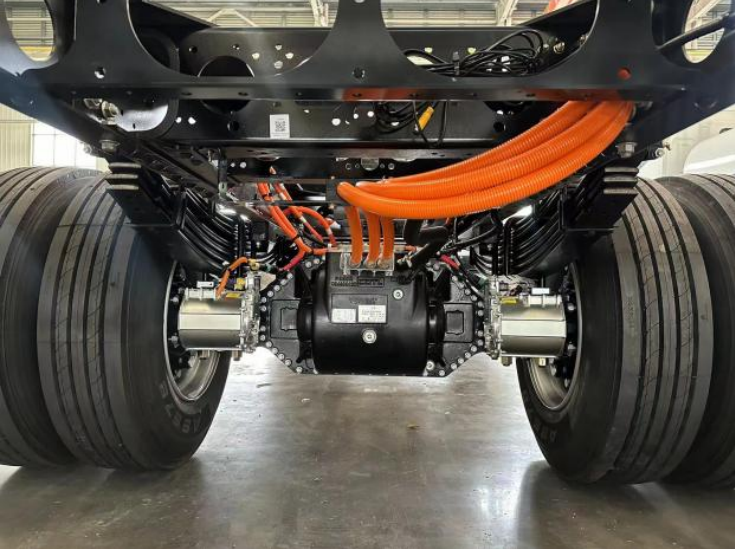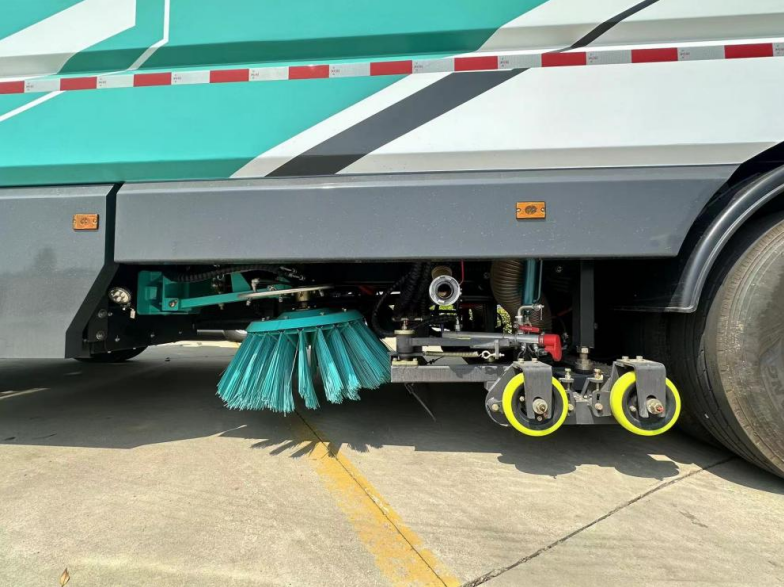As global energy supplies become increasingly strained, international crude oil prices fluctuate, and ecological environments deteriorate, energy conservation and environmental protection have become global priorities. Pure electric vehicles, with their zero emissions, zero pollution, and high efficiency, represent a major direction for the future of automotive development.
The layout of electric vehicle motors has continuously evolved and improved. Currently, there are several main types: traditional drive layouts, motor-driven axle combinations, and wheel hub motor configurations.
The drive system in this context adopts a layout similar to that used in internal combustion engine vehicles, including components such as the transmission, driveshaft, and drive axle. By replacing the internal combustion engine with an electric motor, the system drives the transmission and driveshaft through the electric motor, which then drives the wheels. This layout can enhance the starting torque of pure electric vehicles and increase their low-speed backup power.
For instance, some chassis models we have developed, such as the 18t, 10t, and 4.5t, use this relatively low-cost, mature, and simple layout.
In this layout, the electric motor is directly combined with a drive axle to transmit power, simplifying the transmission system. A reduction gear and differential are installed at the output shaft of the drive motor end cover. The fixed-ratio reducer amplifies the output torque of the drive motor, improving overall efficiency and providing better power output.
Our collaboration with Changan on 2.7t and 3.5t chassis models employs this mechanically compact and highly efficient transmission layout. This configuration has a short overall transmission length, with compact and space-saving components that facilitate easier integration, helping to further reduce vehicle weight.
The independent wheel hub motor is a highly advanced drive system layout for electric vehicles. It integrates the electric drive motor with a reducer into the drive axle, using a rigid connection installed at each wheel. Each motor independently drives one wheel, enabling highly personalized power control and optimal handling performance. The optimized drive system can lower the vehicle’s height, increase load capacity, and enhance usable space.
For example, our self-developed 18t electric drive axle project chassis utilizes this compact and efficient drive unit, reducing the number of components required in the transmission system. It provides excellent vehicle balance and handling performance, making the vehicle more stable during turns and delivering a better driving experience. Moreover, placing the motor close to the wheels allows for more flexible use of vehicle space, resulting in a more compact overall design.
For vehicles like street sweepers, which have high demands for chassis space, this layout maximizes the use of available space, providing more room for cleaning equipment, water tanks, pipes, and other components, thereby achieving optimal utilization of the chassis space.
Post time: Sep-17-2024





